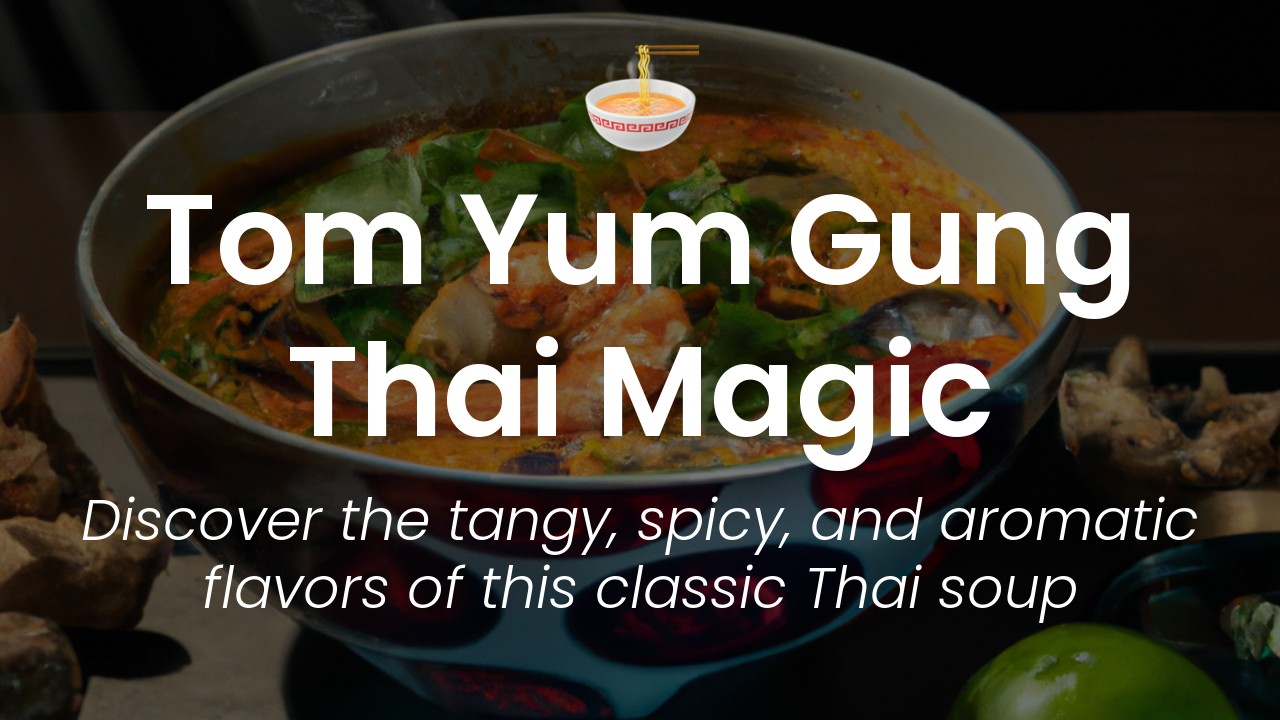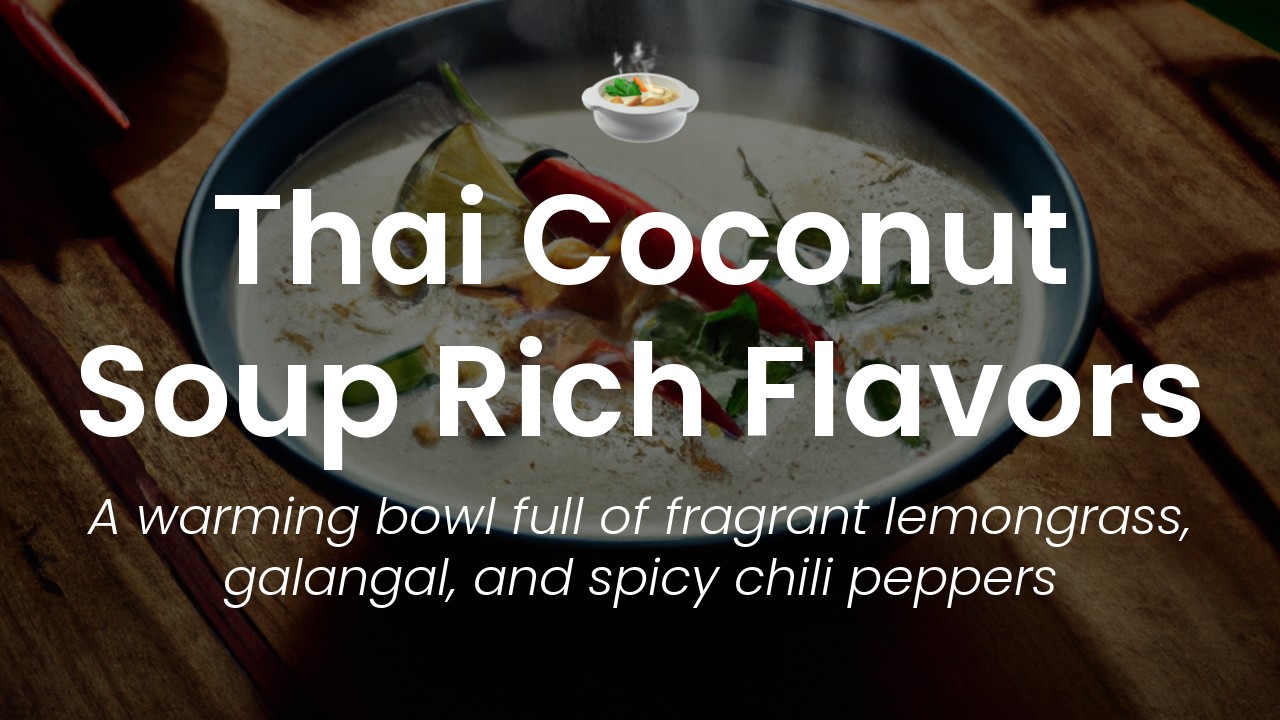As a Thai food enthusiast, I have always been captivated by the delicious and vibrant flavors of my country's cuisine. One of my personal favorites is the infamous Tom Yum Gung, a popular Thai soup that is packed with a mixture of sweet, sour, and spicy flavors. This soup is savory, creamy, and aromatic all at once. It's no surprise that this dish is a global phenomenon and is considered one of Thailand's most beloved culinary treasures.
Tom Yum Gung translates to spicy shrimp soup and is considered a staple in Thai cuisine. It's a blend of fresh shrimp, mushrooms, lemongrass, kaffir lime leaves, chili paste, and other key ingredients that come together in perfect harmony to create a mouth-watering delight. What makes Tom Yum Gung unique is that it's a combination of contrasting flavors that are intricately balanced. The sourness of the lime juice is offset by the richness of the coconut milk, while the spiciness of the chilies is countered by the sweetness of the prawns.
In this blog post, I will unravel the secret behind Tom Yum Gung and provide you with a step-by-step recipe to create this savory soup at home. I'll also share some interesting facts about this popular Thai delicacy and provide some tips on where to find the best Tom Yum Gung in Thailand. So, fasten your seatbelts, and let's take a culinary journey to discover the secrets of Tom Yum Gung.
The history and origin of Tom Yum Gung
Tom Yum Gung, a popular Thai dish, is a spicy and sour soup with a rich aroma. The dish has gained immense popularity all over the world due to its unique and delicious taste.
The origin of Tom Yum Gung can be traced back to central Thailand, where it was traditionally consumed as a type of lemongrass tea. Later on, fishermen in the coastal areas of Thailand started adding seafood to the soup, transforming it into the dish we know today.
The dish is said to have originated in the early 19th century during the reign of King Rama IV. The King was said to be a fan of spicy and sour dishes, and it is believed that he gave the recipe to the locals. This is how the dish gained its prominence and became a staple in Thai cuisine.
Over the years, Tom Yum Gung has seen various modifications and variations. The traditional recipe has been tweaked to cater to different tastes and preferences, resulting in several versions of the dish. However, the essence of the soup remains the same – a balance of spicy, sour, savory, and fragrant flavors.
Key ingredients and how they contribute to its flavor
The key ingredients that contribute to the unique taste of Tom Yum Gung are lemongrass, kaffir lime leaves, galangal, chili peppers, lime juice, fish sauce, and shrimp.
Lemongrass is a stalky herb with a citrusy flavor that acts as a flavor enhancer. Kaffir lime leaves have a strong and distinct aroma, and their use in Thai cuisine is widespread. They add an earthy and refreshing flavor to the soup.
Galangal, also known as Thai ginger, has a mild and spicy taste that helps balance the sourness of the soup. Chili peppers are the star of the show, adding a spicy and flavorful kick to the dish that is hard to forget.
Lime juice adds a tangy and acidic flavor to the soup, which compliments the spicy and savory notes. Fish sauce, a staple in Thai cuisine, is used to add umami and saltiness to the dish. The shrimp adds a meaty texture and flavor that marries well with the broth.
Tips for making the perfect Tom Yum Gung at home
Making Tom Yum Gung at home may seem intimidating, but with the right ingredients and technique, it's easy to get it right. Here are some tips to help you make the perfect Tom Yum Gung at home:
-
Use fresh ingredients – Fresh herbs, shrimp, and vegetables are critical to the success of the dish. Avoid canned or processed ingredients, as they will negatively impact the taste of the soup.
-
Invest in a good stock – A good stock is the foundation of the soup. Use a high-quality vegetable or chicken stock, or prepare your own at home for the best results.
-
Balance the flavors – Tom Yum Gung is all about achieving a perfect balance of flavors. Taste your soup frequently to ensure that you have the right combination of spicy, sour, savory, and fragrant flavors.
-
Use different types of chilies – Experiment with different types and quantities of chilies to achieve the level of heat you prefer. Some people prefer their soup mild, while others like it very spicy.
-
Garnish appropriately – Garnishing the soup with fresh cilantro, green onions, and lime wedges adds a colorful and aromatic finishing touch to the dish.
Variations of Tom Yum Gung
Over the years, Tom Yum Gung has seen several variations to cater to different tastes and dietary restrictions. Here are some of the most popular variations of the dish:
-
Tom Yum Talay – A seafood version of the soup that incorporates a variety of seafood, such as squid, fish, and mussels.
-
Tom Yum Chicken – A chicken-based version of the soup that replaces the seafood with chicken.
-
Vegetarian Tom Yum – A vegetarian version of the soup that replaces the shrimp with tofu or mushrooms.
-
Tom Kha Gai – A creamy version of Tom Yum Gung that includes coconut milk, making it a milder and creamier soup.
-
Tom Yum Noodle Soup – A variant of the soup that includes noodles to make it more filling and hearty.
An insider's guide to the best places to try Tom Yum Gung in Thailand
Tom Yum Gung is a popular dish in Thailand, and you can find it in most restaurants and street food stalls. However, some places serve the soup with an extra oomph of flavor that sets them apart from the rest.
Here are our top picks for the best places to try Tom Yum Gung in Thailand:
-
Tom Yum Goong Banglamphu – This street food stall in Bangkok is known for its authentic Tom Yum Gung, made with fresh and locally sourced ingredients.
-
Krua Apsorn – This well-known restaurant in Bangkok has been serving Tom Yum Goong since the 1950s, and their recipe has been passed down through generations.
-
Somboon Seafood – This seafood restaurant in Bangkok is famous for its Tom Yum Talay, which is packed with an assortment of fresh seafood.
-
Cha-om Tom Yum Pla – This restaurant in Chiang Mai is known for its unique twist on the traditional Tom Yum, which includes cha-om, a green vegetable with a distinct taste.
-
Tom Yum Goong Raya – This restaurant in Phuket serves a delicious Tom Yum Goong made with authentic Southern Thai flavors and spices.



